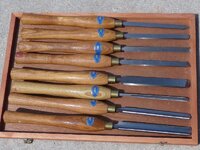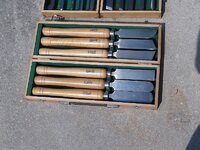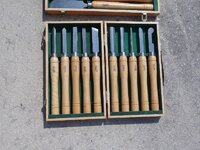phillywood
Member
Hello, folks, I just got my hands on some turning tools that one set has the label bands ( Crown tools from Sheffield England) the other set is AMT turning tool set. I'll try to post pictures tomorrow. I was trying to find out when they were made and what they are worth, however, when I googled them I couldn't find anything. I was hoping that some of our older (in turning years) members can help or direct me to them. Or, if you can remember where these gouges were sold and what type of steel they are made of?
These are the pic.s I added 5/24/11
These are the pic.s I added 5/24/11
Attachments
Last edited:



